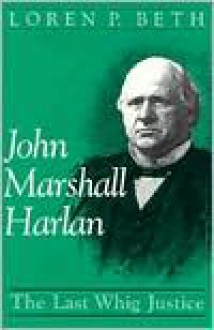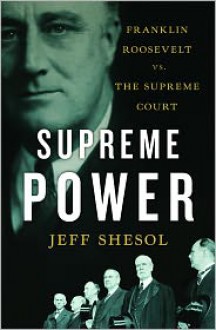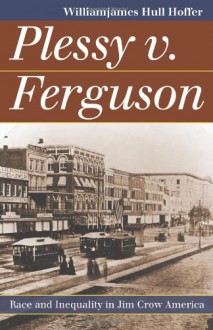

Though often a lone dissenter from the prevailing legal thought of his time, the reputation of John Marshall Harlan has enjoyed considerable rehabilitation since his death. Best known for his criticism of the Plessy v. Ferguson decision, his opinions in that and other cases have come to be seen by many legal scholars as precursors to the liberal jurisprudence of the twentieth century. Capping this new appreciation of Harlan’s work was Loren P. Beth’s biography of the Supreme Court justice, which offers an examination of both Harlan’s life and his jurisprudence.
Beth divides his analysis into three parts. The first two are biographical and chronological, examining his life both before and on the Court. Much of the information about his life before his selection to the court comes from reminisces written by Harlan and his wife Malvina, and Beth often includes large sections from them in his text. The Harlan that emerges in these pages is an extremely political man, one who was active in the dramatic struggles of mid-19th century politics. Starting as a Whig, he drifted in the unstable Kentucky party political environment before finally becoming a Republican in 1868. Though unsuccessful in two campaigns for the governorship of Kentucky, Harlan’s efforts on behalf of the party in his state helped make him a national political figure, leading to his nomination to the Court in 1877.
The second part of the book, which looks at Harlan’s family life, his relationships with his justices, and his role in the politics surrounding the Court, serves as a useful bridge to the final section, which addresses his jurisprudence. Here Beth analyzes his decisions by topic, grouping them into categories so as to identify the underlying legal philosophy that collectively they reveal. While these chapters are informative, they do not succeed in Beth’s goal, as illustrated by his subtitle, of demonstrating that Harlan’s decisions reflected Whig political ideology, nor does the author reconcile the many inconsistencies and contradictions that existed between the Harlan’s life and his jurisprudence. This, along with the poor editing (there are numerous minor factual errors throughout the book, particularly regarding dates), make for the book that is a useful introduction to Harlan’s life but not the thorough analytical study that the justice deserves.

The effort by Franklin Roosevelt to “pack” the Supreme Court in 1937 is regarded today as one of the greatest political missteps ever made by a president. Devised in response to the Court’s rejection of New Deal legislation, it galvanized a seemingly moribund conservative opposition and cost Roosevelt the enormous momentum he possessed coming out of his landslide 1936 reelection victory. Jeff Shesol does not dispute this conclusion, but instead seeks to explain the background to the plan and the course of the battle over it. In doing so, he has provided an absorbing account that illuminates many forgotten or overlooked aspects of the dispute.
Shesol traces the origins of the conflict to the very beginning of Roosevelt’s presidency. From the first he and his administration were concerned about the fate of the New Deal when it was subjected to judicial review, both because of the dubious nature of much of the emergency legislation and because of the traditional role the Supreme Court had played in striking down economic regulation. Here the author does a good job of presenting the Court, showing how in spite of assumptions about its conservatism it nonetheless handed down a number of “liberal” decisions that gave many New Dealers cause for hope. The famous decision in the Schecter case ended causes for such hopes, and as the frustration over the Court mounted Roosevelt and his aides began to search for a solution to the Court’s immovability.
Though numerous approaches were considered, ultimately Roosevelt settled on a plan to expand the number of justices on the Court in order to appoint more members sympathetic to the New Deal. The plan he endorsed was devised by Homer Cummings, Roosevelt’s first Attorney General, and one of the strengths of Shesol’s book is in elevating this often-overlooked figure to his rightful place in the history of the plan. Roosevelt deferred action until he was successfully reelected in 1936, during which he campaigned against conservative opposition to the New Deal but not explicitly against the Court – a decision that Shesol argues helped to avoid controversy that might have cost him votes but that also deprived him of any ability to use his victory to push the measure through Congress. Presented against a backdrop of increasing totalitarianism in Europe, the plan alienated many within even his own party, and it was they who soon emerged as its most prominent opponents. Yet Shesol argues that even after Owen Roberts’s timely switch in the Parrish case and Willis Van Devanter’s retirement in May 1937 deprived the plan’s supporters of many of their arguments, a scaled-down version of the bill might have passed were it not for the death of Joseph Robinson, the Senate majority leader, in July. Without his leadership, the plan died quickly, dealing Roosevelt his first major political setback and leaving in its wake a strong conservative opposition to further extension of the New Deal.
Fluidly written and based on a considerable amount of research, Shesol’s book is a superb history of Franklin Roosevelt and his confrontation with the Supreme Court. Not only is the author is a sure guide to the complex cases that defined the struggle, he also has an eye for the telling anecdote, which helps him to bring color to the greyest branch of the government. Thanks to the clarity of its prose and wealth of details, it will likely serve for some time as the definitive history of the issue, one that readers can read for enjoyment as well as enlightenment.

John Hessin Clarke ranks among the large body of obscure Supreme Court justices in America’s history, which is unfortunate when considering his particulars of his life. Born and raised in Ohio, Clarke balanced a career in the law with part-ownership in a small-town newspaper and participation in Democratic party politics. An enthusiastic Progressive, he twice sought election to the United States Senate before being appointed to the federal bench by Woodrow Wilson. In 1916 he was named to the Supreme Court, where he served for six years before a combination of personal loss and frustration with his work led him to retire. In retirement, he spearheaded a campaign to convince America to join the League of Nations, one that failed in its stated goals but helped paved the way for America’s participation in the United Nations after World War II.
Given all of this, it is unfortunate that Clarke has attracted so little attention from scholars; indeed Hoyt Landon Warner’s book is the only complete biography about him. In some respects, this is a testament to the author’s thorough work. He draws from numerous archival collections to piece together Clarke’s life, using Clarke’s personal letters and journalism as well as interviews with people who knew the justice to present a comprehensive portrait of his views and jurisprudence. The result is a well-rounded portrait of Clarke, one in which his time on the Supreme Court is just one part of a long and varied life. Yet the broader historical scholarship Warner draws from is notably dated, relying on a presentation of the era that is in need of updating.
More serious is the author’s bias towards Clarke. Warner proves to be a sympathetic biographer – indeed, perhaps too sympathetic of one. His interpretations of Clarke’s actions are invariably favorable or forgiving, with little critical assessment of the justice’s actions and decisions. This is particularly apparent in his chapter on Clarke’s time as a railroad lawyer, in which Warner labors to demonstrate the compatibility of his subject’s legal advocacy with his Progressive beliefs. Such efforts are sometimes so tortuous as to invite incredulity, and can engender doubt about Warner’s overall judgements regarding his subject.
These flaws detract from what is otherwise an informative and valuable work. More than a half-century after its publication, Warner’s book remains an indispensable source for understanding Clarke’s life and career. It succeeds in demonstrating that Clarke was more than a jurist, and in fact had a career marked by success in numerous areas. Hopefully some other scholar will write soon a more up-to-date and balanced assessment of the justice; until then, this is the book to read for anyone seeking to learn about this remarkable figure.

Of all of the discredited decisions in the history of the Supreme Court, few are as roundly condemned today as the one issued in the case of Plessy v. Ferguson. In upholding a Louisiana law mandating the segregation of whites and blacks on Louisiana railroads, it unleashed a flood of measures that condemned two generations of African Americans to second-class existence throughout the South. In this book, Williamjames Hull Hoffer offers a history of the decision, one that sets it in its context so as to better understand the case and the underlying forces at work within it.
Hoffer begins by introducing readers to 19th century New Orleans, a city where race relations were even more complicated than elsewhere in the South. The years of French and Spanish rule had left a sizeable community of Creoles, free persons of color. This community had a strong sense of pride in their own identity, and resented the discriminatory treatment they received in the antebellum American South. The Civil War and Reconstruction gave the Creole an opportunity to assert their legal equality, yet the end of Reconstruction soon brought a reversal of many of these gains at the hands of the “Redeemer”which took power. By the 1880s, laws appeared throughout the South heralding a return to a segregated South, one the Supreme Court endorsed in 1890 with the proviso that facilities for African Americans had to be the equal of whites.
It was the passage of the Separate Car Act soon afterward by the overwhelmingly white Louisiana state legislature in 1890 which prompted Afro-Creole community leaders to mount a legal challenge. After an initial test case was threatened by a question of applicability, Homer Plessy was recruited to serve as a litigant, with his arrest providing the case the community leaders wanted. Here Hoffer provides a good concise analysis of the legal arguments made by both sides as the case worked its way to the Supreme Court, and he explains nicely both the majority decision authored by Supreme Court Justice Henry Billings Brown and the famous dissent penned by John Marshall Harlan. With the decision effectively endorsing segregation a horde of new laws were passed that solidified the divide between whites and African Americans, not just in the South but in other places as well, where it stood until a later Court effectively reversed its decisions in the 1950s and 1960s.
In summarizing the case with the pages of the book, Hoffer pulls off the difficult challenge of providing an account that is both concise and informative. His account of the political, legal, and social climate helps to explain the Plessy decision as a product of its time, yet one that often used a distorted reasoning in pursuit of the final result. It makes for depressing reading, yet by the end of the book the reader is left with a far better understanding of this pivotal legal decision and how it came to pass. Anyone seeking to learn about the Plessy case and its shameful legacy would do well to start with this informative book, which shines a much needed light on a dark moment in American history.